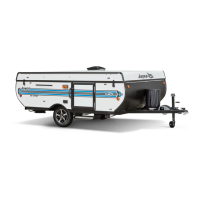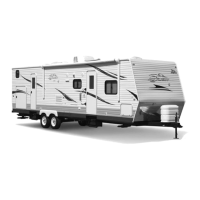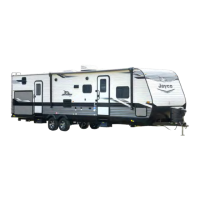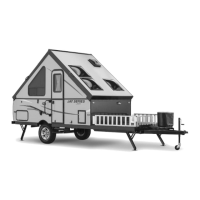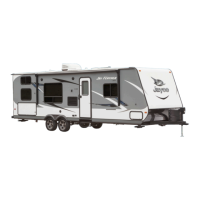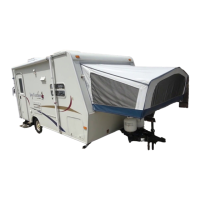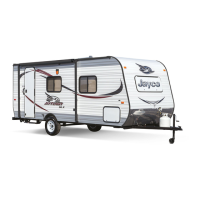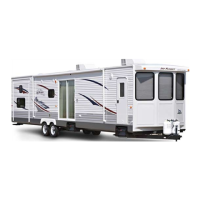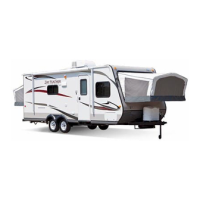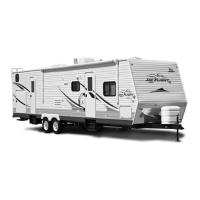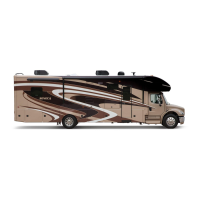until the actual overall weight is less than
or equal to GVWR.
2. Hitch the RV to your tow vehicle. Weigh the
RV and the tow vehicle to determine the
GCW. Make sure that this rating is less
than or equal to the GCWR as specified by
the manufacturer of your tow vehicle. If this
overall weight is greater than the GCWR,
some contents must be removed to bring
the combination into compliance with the
listed ratings.
3. Weigh the RV while attached to but
excluding the tow vehicle. This will result in
the actual weight that is exerted on all of
the RV tires. This weight may be
subtracted from the overall RV GVWR to
determine the actual “tongue” weight.
4. With the RV still attached to the tow
vehicle, weigh each wheel position
separately to ensure each tire is not
overloaded.
To determine the wheel position weight
5. Pull the RV onto the scale so only one tire
is on the scale. Record the weight. Your
RV must remain as level as possible on the
scale (even though an axle or side is not
physically on the scale). Obviously, to
obtain the side-to-side weights, there must
be enough space on either side of the
scale to accommodate the RV being
partially off the scale.
6. To calculate the opposite side of the RV
wheel position weight, subtract the first
side’s weight from the weight determined
in step #3.
If there is a difference in the weights on one
side of the vehicle as compared to weights on
the other side, components (tires, wheels,
brakes, springs, etc.) on the heavier side could
be overloaded, even though the total axle load
is within the GAWR. It is important to
redistribute the load to avoid component
failure, improve the handling characteristics of
the tow vehicle and not void the Towable
Limited Warranty.
With these actual weights, it is now possible to
compare them against the Trailer Weight
Information label weight ratings to ensure you
are below the posted minimum ratings.
For more information
See also Sec. 9 Unit Care & Maintenance.
Read the axle OEM operator’s manual.
FIRST SHORT TRIP
After familiarizing yourself with the RV,
including going through test runs on the
systems and having the RV weighed, it is time
to take one or two short trips. The experience
gained can be priceless. We recommend an
overnight stay at a nearby campground. That
way it is more convenient if you need to go
back to get an item you forgot or didn’t know
you would need. Otherwise, you may end up
spending time or money needlessly by
bringing along unused items that take up
space or trying to locate and purchase items
you hadn’t counted on needing prior to leaving
your home on an extended trip in unfamiliar
territory. Not all RVers will need the same
equipment or supplies. For example, individual
needs and personal tastes differ, as does the
various climates and terrains you will be
traveling through with your RV. Remember if
most of your trips are planned for the summer
and your shake down trip is made during some
other season, there will be adjustments that
you will need to take into consideration.
Be sure to have a pen and notebook available
to write down items that you feel may be
needed in future travels, as well as noting the
equipment you feel you need to become more
comfortable using or learning how to operate
safely.
RV Departure Checklist
Following is a preliminary list of items that
need to be checked on your RV before leaving
your home or campsite. As you camp, you may
want to develop your own list tailored to your
individual camping style in addition to the
checklist provided:
55
SECTION 6
PRE-TRAVEL INFORMATION

